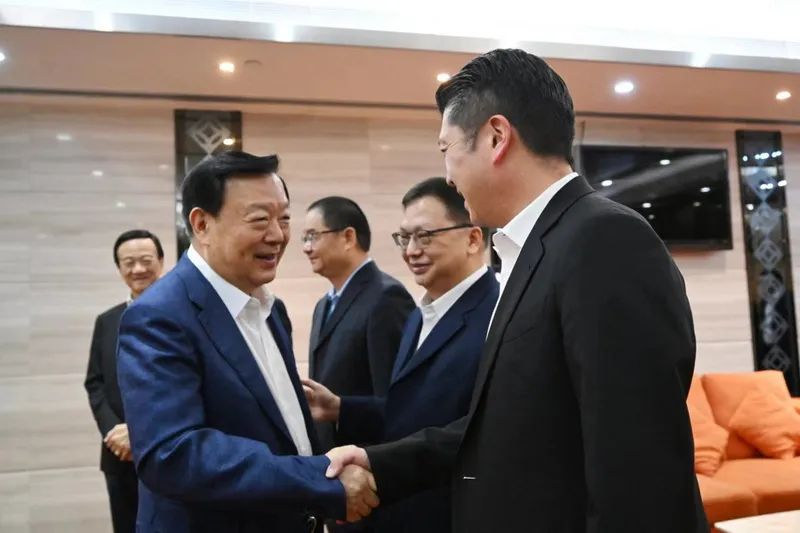By Tu Haiming
Xia Baolong, director of the Hong Kong and Macao Work Office of the Communist Party of China Central Committee, highlighted six major advantages Macao has during his inspection tour to the special administrative region.
The most prominent one among those six advantages, as he emphasized, is the institutional advantage of “one country, two systems”, followed by the ample space for Macao’s economic development. These two essentially are closely related.
When Macao returned to the motherland in 1999, it only had a land area of 21.45 square kilometers. Over the past two decades, the central government approved Macao’s multiple land reclamation moves and allowed the city to move its boundaries with Zhuhai northward, which together have expanded Macao’s land area to 33.3 sq km. In 2021, the central government formally designated Hengqin, an island of 106.46 sq km on the mainland side, as a zone for comprehensive cooperation between Guangdong province and Macao. With the implementation of a new system of joint consultation, joint management and benefit-sharing between the two sides, the land resources available for Macao’s development have increased to 224.76 sq km, which is 10 times more than what it was 25 years ago. This owes much to the institutional arrangement of “one country, two systems”.
Previously, Macao had a very narrow economic base, which heavily relied on its robust gambling sector, rendering the city’s economy vulnerable to downturns in the sector. Over the years, the central government has continuously provided land and resources to help diversify Macao’s economy, sparing no effort to help make up for the city’s shortcomings in economic structure, specifically supporting the city’s “1+4” development strategy, which seeks to sustain its robust gambling, tourism and leisure industries while promoting the development of traditional Chinese medicine, modern finance, high-end and new technology, and the exhibition, trade, culture and sports industries.
Xia’s inspection tour of Hong Kong in February was followed by a series of supportive national policies aimed at boosting the development of the two SARs; it is reasonable for one to suggest that his visit to Macao this time heralds further supporting measures from the central government for both SARs
Today, a new collaborative development pattern is being forged between Macao and Hengqin, wherein firms with a global presence are headquartered in Macao while having their operations and production bases in Hengqin. As the Macao Special Administrative Region Chief Executive Ho Iat-seng recently noted, the city’s economic structure has undergone a major shift, with the share of the gambling industry in gross domestic product having declined to 36.2 percent last year from a high of 63 percent.
“One country, two systems” has brought many benefits to Hong Kong as well as Macao — the most important being the central government’s strong support for the two special administrative regions to tackle their weaknesses. Realizing the constraints of the two SARs’ small land sizes and limited development spaces, the central government has gone out of its way to support both cities in expanding their spaces for economic development. In the case of Hong Kong, for example, Qianhai, Nansha and the Lok Ma Chau Loop have been designated as pilot zones for cooperation between Shenzhen and Hong Kong, as well as the bridgeheads for Hong Kong’s northbound expansion. Meanwhile, the development of the Guangdong-Hong Kong-Macao Greater Bay Area provides both SARs with greater room for growth.
Tackling weaknesses is not limited to the aspect of geographical dimensions but also to the allocation of other resources, which are expected to be provided by the central government continuously.
The four new sectors in Macao’s “1+4” development strategy have established their presence in the city. But they still lack distinctive advantages. With the central government’s staunch support, they will likely rise to prominence soon. Xia’s itineraries in Macao covered these four sectors; it is envisaged that the central government will roll out supporting measures for these sectors.
Meanwhile, the central government also supports Hong Kong to further strengthen its pillar industries. It also throws its weight behind the city’s efforts to tackle its areas of weakness and build new advantages. For example, the country’s national 14th Five-Year Plan (2021-25) clearly declares the central government’s support for Hong Kong in developing the proposed “eight centers”, which are essentially what the city is good at. Hong Kong should seize this opportunity to leverage the policies and resources provided by the central government to expedite the development of the “eight centers”, which will ultimately enhance the city’s global competitiveness.
Turning the central government’s support into growth momentum is incumbent on both the Hong Kong and Macao SARs. Xia’s inspection tour of Hong Kong in February was followed by a series of supportive national policies aimed at boosting the development of the two SARs; it is reasonable for one to suggest that his visit to Macao this time heralds further supporting measures from the central government for both SARs.
The author is vice-chairman of the Committee on Liaison with Hong Kong, Macao, Taiwan and Overseas Chinese of the National Committee of the Chinese People’s Political Consultative Conference and chairman of the Hong Kong New Era Development Thinktank.
The views do not necessarily reflect those of Bauhinia Magazine.
https://res.youuu.com/zjres/2024/5/24/KHJJ8LhndydbP7eHKg0aIrL77Hlc2XzJfve.jpg











掃描二維碼分享到手機














